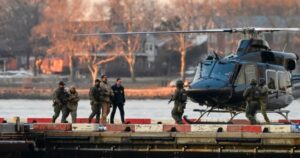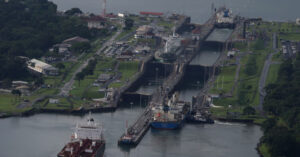With the exit of a largest part of the Fleet in the Aegean, Greece responds to the continuous Turkish provocations of the last few days, while sending a message of readiness to the side of Ankara in view of the imminent descent of the Oruc Reis research vessel from the Black Sea to the South Mediterranean, probably in early October.
Despite the fact that the mobilization of the fleet’s warships was planned and is part of the conduct of the “Lohhi” exercise, the first phase of which begins today and will be completed tomorrow in the wider area of the Myrtle Sea and the Cyclades, it is nevertheless directly connected with the increase in tensions in Greek-Turkish relations.
According to information, the Hellenic Navy is already drawing up plans to deal with a possible attempt by Turkey to create an new status quo in the SE Mediterranean, taking advantage of the exit of the Turkish research vessel in the Mediterranean in this direction. It is remind that the Orus Reis, having completed an upgrade, has recently been in the process of testing its systems in the Bosphorus sea area.
Circles of the Greek Ministry of National Defense estimate that despite the fact that Ankara has engaged with Navtex for Orus Reis’ research needs half of Antalya Bay from September 25 to March 24, 2023, its real intentions are to send the vessel in the wider maritime area of Kastellorizo, creating for the second time, within three years, a crisis conditions in Greek-Turkish relations. Already, according to information, orders have been given to the HN ships patrolling in the South Aegean to be on alert in order to detect any increase in Turkish mobility in the area.
Double crisis scenario
One of the scenarios that the Ministry of National Defense is considering is the possibility that Turkey seeks to create a double crisis situation in its relations with Greece on the one hand and with Cyprus on the other.
Based on this scenario, Ankara is likely to link the mission of Oruc Reis in the Kastellorizo sea area with the simultaneous movement of the floating drilling rig “Abdulhamid Khan” from its current location, 55 miles south of Antalya, to the EEZ of Cyprus. It should be noted that the “Abdulhamid Khan” will be in this area until October 7, with the Cypriot side considering that immediately afterwards it may move to an area west or even south of the island.
Washington Examiner: Cyprus should get more US arms support – Analysis
Escalation of intensity
At the same time, the Greek Pentagon, in an effort to decipher Ankara’s further ambitions against Greece and Cyprus, is watching with interest and evaluating, not only the statements of Turkish government officials, but also the tactical moves made by the Turkish military and political leadership.
Indicatively, it should be noted that on Monday at midnight the Turkish Minister of Defense Hulusi Akar proceeded to convene an emergency closed meeting with the participation of the highest officials of the Turkish Defense Forces and the Chief of the General Staff General. As reported, during the meeting Turkey’s next steps against Greece on the issue of the Aegean islands were discussed, while some of them spoke of an “important development” in the midst of the “ongoing crisis between Greece and Turkey”.
Although the said information was denied by the Turkish side, it nevertheless reflects in general the climate that has developed inside the neighboring country against Greece. A climate that is expected to be confirmed during today’s convocation of the powerful National Security Council of Turkey, which is going to meet under the presidency of Recep Tayyip Erdogan.
At the focus of this particular meeting is going to be, among others, Greece. The Turkish President is expected to take advantage of the meeting of the National Security Council to attack Athens again, focusing on his well-known theory about the “illegal” to them Greek military assets on the Aegean islands and the establishment of American bases on Greek soil, which (according to Ankara’s narrative) aim Turkey.
At the same time and on a symbolic level, yesterday the Hellenic Navy General Staff revealed the names of the new Belharra frigates. More specifically, during yesterday’s meeting the Plenary of the Supreme Naval Council decided that the first of the three FDI frigates of the Navy built in Lorient, France, will be named “KIMON”, the second “NEARCHOS” and the third “FORMION”.
Note that the first two frigates will be delivered to the Navy in 2025 and the third in 2026. The three ships will be equipped with an advanced SeaFire radar, Aster 30 anti-aircraft missiles, a 76 mm gun and a RAM CIWS missile system to protect the vessel from air, land and sea. At the same time, they will have a Captas-4 sonar as well as one MH-60R anti-submarine helicopter. The Belharra “arsenal” also includes Exocet missiles capable of hitting targets at long range.
Ask me anything
Explore related questions





